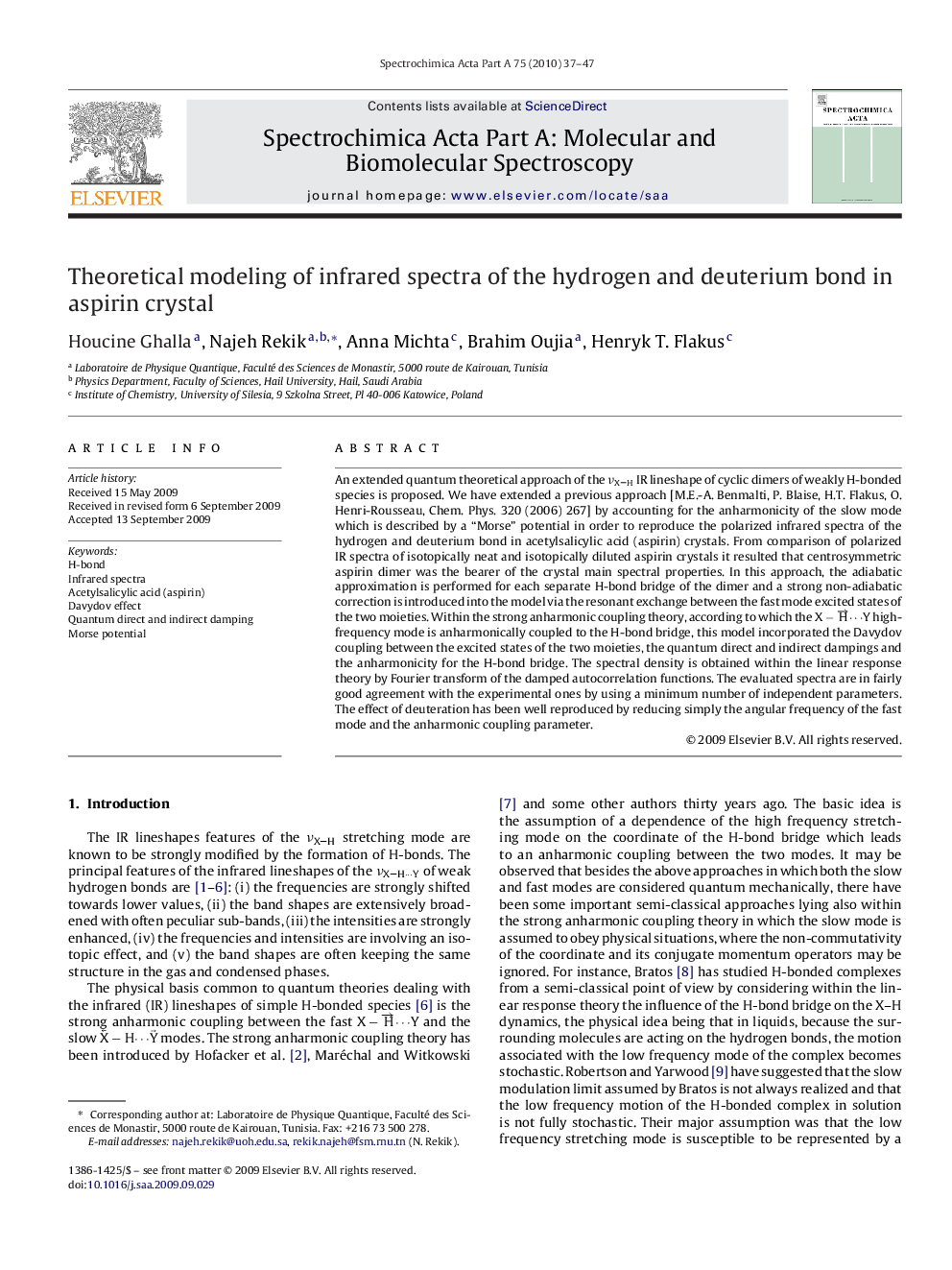| Article ID | Journal | Published Year | Pages | File Type |
|---|---|---|---|---|
| 1234181 | Spectrochimica Acta Part A: Molecular and Biomolecular Spectroscopy | 2010 | 11 Pages |
An extended quantum theoretical approach of the νX–HνX–H IR lineshape of cyclic dimers of weakly H-bonded species is proposed. We have extended a previous approach [M.E.-A. Benmalti, P. Blaise, H.T. Flakus, O. Henri-Rousseau, Chem. Phys. 320 (2006) 267] by accounting for the anharmonicity of the slow mode which is described by a “Morse” potential in order to reproduce the polarized infrared spectra of the hydrogen and deuterium bond in acetylsalicylic acid (aspirin) crystals. From comparison of polarized IR spectra of isotopically neat and isotopically diluted aspirin crystals it resulted that centrosymmetric aspirin dimer was the bearer of the crystal main spectral properties. In this approach, the adiabatic approximation is performed for each separate H-bond bridge of the dimer and a strong non-adiabatic correction is introduced into the model via the resonant exchange between the fast mode excited states of the two moieties. Within the strong anharmonic coupling theory, according to which the X−H→⋯Y high-frequency mode is anharmonically coupled to the H-bond bridge, this model incorporated the Davydov coupling between the excited states of the two moieties, the quantum direct and indirect dampings and the anharmonicity for the H-bond bridge. The spectral density is obtained within the linear response theory by Fourier transform of the damped autocorrelation functions. The evaluated spectra are in fairly good agreement with the experimental ones by using a minimum number of independent parameters. The effect of deuteration has been well reproduced by reducing simply the angular frequency of the fast mode and the anharmonic coupling parameter.
